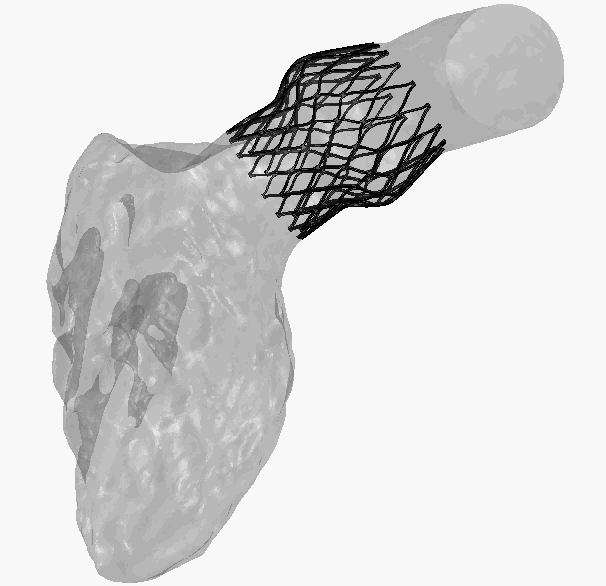
FDA Unveils Transformative Guidance for Computational Modeling in Medical Device Submissions
As the medical device industry moves toward a digital ecosystem, in silico trials, alone and in combination with traditional trials, are becoming a reality.
Our life sciences team is developing technology to create virtual cohorts using parametric anatomy modeling. We develop models for materials like Nitinol and tissue and use a wide range of commercial tools to make in silico trials a practical tool for medical device manufacturers. We have the expertise and mastery of the tools needed to produce these digital solutions—tools that provide mechanistic, multiphysics simulation and AI/machine learning.

Idealized heart valve frame deployed into a patient-specific anatomy and undergoing cardiac-induced motion and deformation.
When you’re buying a T-shirt, your options are often limited: large, medium or small. But what if you need a life-saving stent or valve implanted in your heart? The natural variations in the human body mean that our anatomy doesn’t often fit into predetermined categories of shape and size.
Enter in silico testing. In silico is a technical term for an analysis that takes place in a computer model or simulation rather than in living patients. In silico trials enable medical professionals to simulate each person’s unique anatomy, then create and test devices virtually and predict their effectiveness – without ever cutting into a patient.
The in silico method allows tests to be performed on hundreds of individuals simultaneously, expediting data collection. It also makes it possible to create a wide range of devices that fit patients from specific age, race or gender groups that tend to share anatomical traits – or even to custom-build devices for a specific person.
Working with Synopsys, Duke University and Johns Hopkins University, we're using in silico testing to predict the behavior of implanted heart-valve frames. Using 4D MRI data, we conducted finite element analysis to simulate the motion of an aortic-valve frame in five patients. The models can predict contact pressure, leakage, movement of the frame over time, and distribution of stress before and after implantation.
This technology improves device design, aids in identifying disease-related design issues, minimizes failures and helps doctors make more-informed decisions regarding the health of each of their patients.
FDA Unveils Transformative Guidance for Computational Modeling in Medical Device Submissions
New Report: Aortas, Aneurysms, & AI